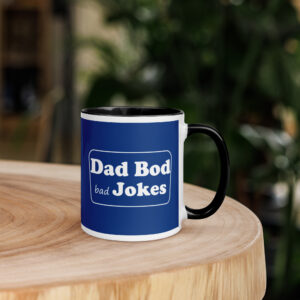So, you’re a dad who wants to make sure your kids have a healthy relationship with technology. You’ve heard all the warnings about screen time and the negative effects it can have on children, but you also know that technology is an important part of modern life. How can you strike a balance between allowing your kids to use technology and making sure they develop a growth mindset?

First of all, it’s important to understand what a growth mindset is. According to Carol Dweck, a growth mindset is the belief that intelligence and abilities can be developed through hard work, dedication, and perseverance. This is in contrast to a fixed mindset, which is the belief that intelligence and abilities are fixed traits that cannot be changed. By encouraging a growth mindset in your children, you can help them develop a love of learning and a willingness to take on new challenges.
But how does technology fit into all of this? Many parents worry that too much screen time can lead to a fixed mindset, as children become passive consumers of content rather than active creators. However, technology can also be a powerful tool for fostering a growth mindset. By using technology to learn new skills, create their own content, and connect with others, children can develop a sense of agency and a belief in their own abilities.
The Bitter-Sweet Symphony of Screen Time

As a parent, you know that screen time can be a tricky subject. On one hand, you want your child to have access to the latest technology and all the information and entertainment it has to offer. On the other hand, you don’t want them to be glued to a screen all day long. It’s a bitter-sweet symphony, but with a little bit of strategy, you can find a happy medium.
The Magic of Media
Let’s face it, we live in a media-saturated world. From TV shows to video games, there’s no shortage of content to consume. But not all media is created equal. Some shows and games can be educational and inspiring, while others can be mind-numbing and violent. It’s up to you to find the right balance for your child.
One way to do this is to choose media that aligns with your child’s interests and passions. For example, if your child loves animals, you can find TV shows and games that teach them about different species and their habitats. This way, they’re not just mindlessly consuming content, but they’re also learning and growing.
The Tablet Temptation
Tablets and phones are a double-edged sword. On one hand, they’re incredibly convenient and can provide your child with a wealth of information and entertainment. On the other hand, they can be incredibly addictive and can lead to a sedentary lifestyle.
One way to avoid the tablet temptation is to set limits on screen time. For example, you can allow your child to use their tablet or phone for a certain amount of time each day, and then have them engage in other activities like playing outside or reading a book. This way, they’re still getting the benefits of technology, but they’re also learning to balance it with other activities.
-

Bold Male Pride – Baseball Trucker Cap Celebrating Masculinity
£18.00 Select options This product has multiple variants. The options may be chosen on the product page -

Dad Bod Appreciation Gift Mug
£14.00 Add to cart -

Dad Bod, Bad Jokes Structured Baseball Cap
£22.00 Select options This product has multiple variants. The options may be chosen on the product page
In conclusion, screen time doesn’t have to be a bitter-sweet symphony. With a little bit of strategy and balance, you can help your child navigate the world of technology and grow into a well-rounded individual.
The Art of Balancing Screen Time
As a dad, you know that balancing screen time is an art form. It’s like walking a tightrope, but instead of a net, you have a bunch of angry kids waiting to pounce if you lose your balance. But fear not! With a little bit of planning and a lot of patience, you can master the art of balancing screen time.
The Screen Time Seesaw
One of the biggest challenges of screen time is finding the right balance. It’s like a seesaw: too much screen time and your kids will be bouncing off the walls, but too little and they’ll be bored out of their minds. So, how do you find the right balance?
The key is to set limits. You can use an app or a timer to help you keep track of how much screen time your kids are getting. And don’t forget to set limits for yourself too! It’s easy to get sucked into your own screen time, but remember, your kids are watching.
The Homework Hurdle
Another challenge of screen time is homework. It’s hard to get your kids to focus on their homework when there’s a screen calling their name. But fear not! You can use screen time to your advantage.
Set aside specific times for homework and screen time. For example, your kids can have an hour of screen time after they finish their homework. This will give them something to look forward to and help them stay focused on their work.
The Family Time Fiasco
One of the biggest benefits of screen time is that it can be a great way to spend time together as a family. But it’s important to make sure that screen time doesn’t take over your family time.
Set aside specific times for family time that don’t involve screens. This could be a game night, a family dinner, or a trip to the park. Make sure that everyone knows that these times are screen-free and stick to it!
Balancing screen time can be a challenge, but with a little bit of planning and a lot of patience, you can master the art of balancing screen time. Remember to set limits, use screen time to your advantage, and make time for family time that doesn’t involve screens.
The Dark Side of Digital Devices
As a dad, you know that digital devices can be a double-edged sword. They can be great for entertainment, education, and communication, but they also have a dark side that can affect your child’s sleep, attention, and vision. Let’s take a look at some of the ways digital devices can be a villain in your child’s life.
The Sleep Snatcher
Digital devices can be a real sleep snatcher. The blue light emitted by smartphones and tablets can suppress the production of melatonin, a hormone that regulates sleep. This means that if your child is using their digital device before bedtime, they may have trouble falling asleep or staying asleep. To combat this, you can set a “no screens before bed” rule and encourage your child to read a book or do some other calming activity instead.
The Attention Assassin
Digital devices can also be an attention assassin. They are designed to be addictive, with notifications, alerts, and constant updates that keep your child’s brain engaged. This can make it hard for them to focus on other tasks, like homework or chores. To help your child develop a growth mindset and improve their attention span, you can encourage them to take breaks from their devices and practice mindfulness or meditation.
The Vision Villain
Finally, digital devices can be a vision villain. Staring at a screen for extended periods of time can cause eye strain, headaches, and even nearsightedness. To protect your child’s vision, you can encourage them to take frequent breaks from their devices and practice the 20-20-20 rule: every 20 minutes, look away from the screen and focus on something 20 feet away for 20 seconds.
In conclusion, while digital devices can be a great tool for learning and entertainment, they also have a dark side that can affect your child’s sleep, attention, and vision. By setting boundaries, encouraging breaks, and promoting healthy habits, you can help your child develop a growth mindset and use technology in a positive way.
The Screen Time Survival Guide

As a dad, you want to make sure your kids are both safe and happy. But when it comes to screen time, it can be hard to strike the right balance. Too much screen time can lead to problems like attention issues and less time for learning, but too little can leave your kids feeling left out. Don’t worry, though – with this Screen Time Survival Guide, you’ll be equipped with all the tools you need to navigate the tricky waters of screen time.
The Age-Appropriate Arsenal
First things first: different ages need different types of screen time. For younger kids, interactive games and apps can help with cognitive development, while older kids might benefit more from educational videos or social media. Check out this article for more information on how screen time affects development.
The Quality Quest
Not all screen time is created equal. Make sure your kids are spending their time on high-quality content that’s appropriate for their age. Look for apps, games, and shows that are educational, interactive, and engaging. And don’t forget to join in the fun! Playing games or watching shows with your kids can be a great bonding experience.
The Rulebook of Respect
Finally, it’s important to set some ground rules for screen time. Make sure your kids know what’s expected of them, whether it’s limiting their time on certain apps or devices, or making sure they’re respectful of others online. Check out this article for some great tips on how to set boundaries that work for everyone.
With these tips in your arsenal, you’ll be able to approach screen time with confidence and a growth mindset. Remember, it’s all about finding the right balance – and with a little trial and error, you’ll get there in no time.
Conclusion

So there you have it, folks! You’ve learned about the benefits of technology, the challenges it presents, and the importance of moderation when it comes to screen time. As a parent, it’s important to be mindful of the culture we’re creating around technology in our homes.
Remember, technology is not going anywhere. It’s a part of our lives and our children’s lives. We can’t shield them from it forever, nor should we. But we can control how we use it and how it affects our children’s growth mindset.
So, embrace technology as a tool for learning and growth, but be mindful of the time spent on it. Encourage your children to use technology in a way that supports their passions and interests. And most importantly, model healthy technology habits yourself.
With the right approach, technology can be a powerful tool for fostering a growth mindset in your child. So go forth, tech-savvy parents, and use your powers for good!







